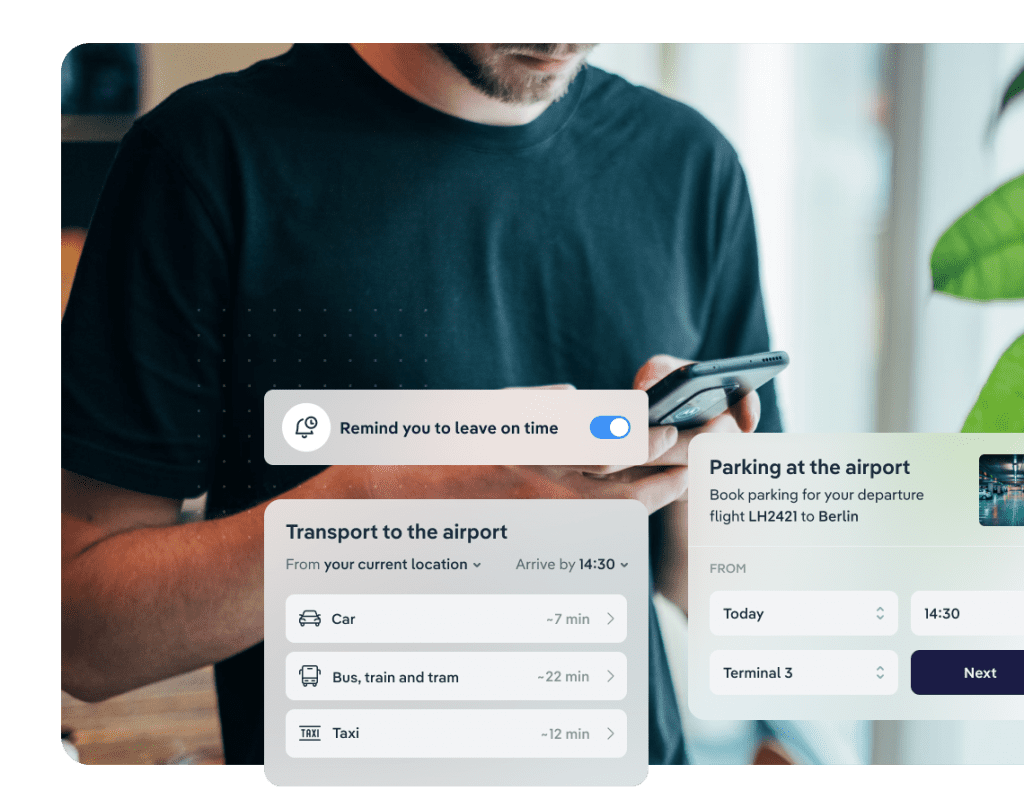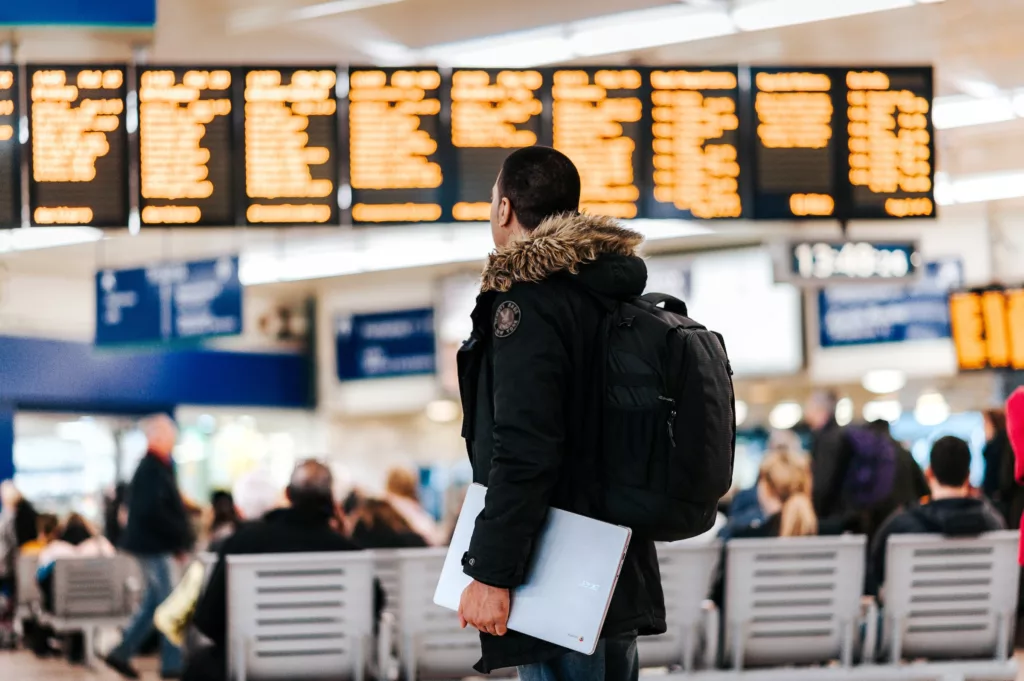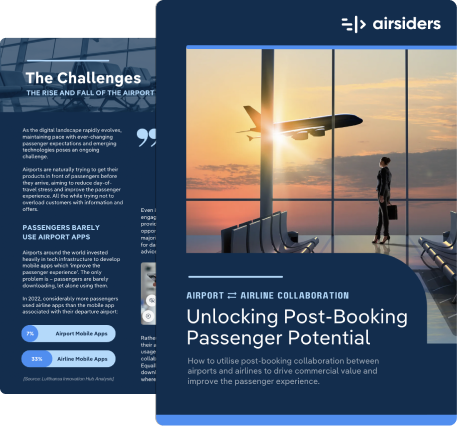E-Commerce Personalization: A New Era for Airport Revenue
The Power of E-Commerce Personalisation for Airports
In today's rapidly changing aviation landscape, non-aero revenue has emerged as a linchpin for airport growth and sustainable business operations. As more passengers tread the airport concourses, the race to engage, entice, and convert them into customers has intensified. Interestingly, the heart of this evolution lies not just in introducing new services but in personalising the digital experience.
The Rise of Non-Aero Revenue Streams
It's no longer just about operational performance and airline partnerships.
Non-Aero revenue streams have grown in importance for airports, as airlines heavily try to bargain on aero fees to be paid to the airport
Airports are now looking beyond the horizon, venturing into direct e-commerce offerings to enhance passenger experience and simultaneously boost revenue. Some notable additions to their arsenal include:
- Duty-Free Shopping: Transforming wait times into shopping adventures.
- Order Ahead Food Services: No more waiting in line for your favourite meal.
- Parking Reservations: Ensuring a seamless start to the journey.
- Fast-Track Options: Bypassing the crowds, offering passengers the luxury of time.
And these are just the tip of the iceberg. As technology evolves, so does the array of services that airports can offer.

Addressing the Elephant in the Room
However, introducing services is just half the battle won. The bigger challenge? Ensuring passengers know about, and more importantly, avail these offerings. Two core issues plague airports:
- Limited User Engagement: According to a study by TNMT / LIH research, only 7% of passengers regularly engage with airport apps or websites. This low number directly translates to missed opportunities for upselling and cross-selling.
- One Size Doesn't Fit All: A passenger arriving from a long haul flight might be looking for a quick bite. In contrast, a business traveller may find value in a fast-track service. A parking reservation for a transit passenger is irrelevant.
The Age of Personalisation
The key to effective e-commerce lies in personalisation. For airports, this means:
- Addressing Pain Points: By identifying the needs of different passenger types, airports can attract them with tailored, relevant information.
- Broad-based Platform Accessibility: A web-based platform ensures broader accessibility, especially when it can be linked from airlines and other travel platforms. This not only promotes the airport's services but also enhances the overall travel experience.
- Journey-based Personalisation: Offers should be dynamic, changing based on the passenger's journey timeline and type.
Airports have seen substantial growth in non-aeronautical revenues in recent years, rising from 33% in 2010 to over 40% today according to ACI statistics. As airports look to further diversify revenue streams, many have turned to offering new digital products and services directly to passengers. However, the challenge remains in effectively marketing these e-commerce offerings amidst low digital engagement rates.
Personalizing the passenger experience through an integrated travel planning platform provides a solution for airports to maximize the success of their online businesses.
Current digital touchpoints like mobile apps struggle to reach more than 7% of passengers on average according to surveys by Amadeus and SITA. Even for those interacted with, offers are often irrelevant as they lack personalization. For example, an arriving traveler has no interest in fast-track security while a connection passenger wouldn’t benefit from parking deals.

Personalization presents a key opportunity for useful wayfinding, trip planning features that reinforce the airport brand across all phases of travel.
Some airports have already had some wins with personalisation.
In Canada, Vancouver International Airport has implemented such an approach through their “YVR Experience” travel assistant. Passengers enter trip details upfront and receive a customized journey overview mapping terminal walking routes, popular amenities, and promotions matched to their itinerary. This level of digital concierge service helps relieve stress and encourage spending.
Taking the concept further, a shared travel planning platform could power e-commerce at any airport globally. The proposed “Airport Web App” would allow passengers to input flight reservations from any carrier. It then previews their end-to-end airport experience, integrating real-time flight updates and highlighting recommended offers inserted directly into the itinerary page. Notifications are also pushed through the app’s digital wallet for those who download it.
Airports maintain full control over which passenger segments receive each promotion. For example, short connection travelers may see food/retail but skipped over parking ads. Demographic and purchase history data could also refine targeting over time. Most importantly, the app supports airport branding while any airline or OTAs can seamlessly integrate the tool into their own channels as a value-added service.
Since launches, Incheon Airport and Singapore Changi Airport have credited passenger-centric technologies including personalization with over 10% year-over-year increases in non-ticket sales.
Enter the Airport WebApp, a revolutionary solution designed to bridge these very gaps.
Airport WebApp: Revolutionising the Travel Experience
So, how does the WebApp transform the e-commerce experience for passengers?
Intuitive Itinerary Selection: Passengers start by choosing their flight itinerary. Simple, right?
Journey Preview: No more ambiguity. Passengers can visualise their entire airport journey, ensuring they’re always a step ahead.
Personalised E-commerce Recommendations: Here's where the magic happens. The WebApp curates and promotes offers that resonate with the passenger’s profile and journey type. Whether it's on the itinerary page, integrated within the map, or via real-time wallet notifications (for those who opt for downloads), passengers receive timely, relevant promotions.
Flexibility for Airports:
Airports aren’t bound by rigidity. They can decide which offers to push for different passenger segments. Tailoring offers not only boosts sales but significantly enhances the passenger experience.
Collaborative Approach:
Recognising that the tool is beneficial for all travellers, the WebApp is designed to be promoted by airlines and other travel platforms post-booking, further enriching the digital experience for passengers.
In essence, the Airport WebApp is not just another digital tool; it's a strategic asset, enhancing the journey for passengers while simultaneously creating lucrative revenue opportunities for airports.

Which other airports have successfully made the jump into e-commerce personalization?
These airport examples have successfully leveraged e-commerce personalization strategies:
- Incheon Airport (ICN): Their "My Airport" platform allows travellers to save flight/passenger details to receive tailored shopping/dining recommendations at each terminal based on departure times. Profiles are also used to promote nearby Seoul attractions. This boosted concessions 3-5% yearly.
- Amsterdam Airport Schiphol (AMS): By linking frequent flyer data from KLM and EasyJet, Schiphol can remarket to loyal flyers visiting their home airport. Past purchases influence targeted digital ads for related products. First-party data sharing has increased retail repeat sales 10%.
- Dubai International (DXB): Emirates worked with Dubai Airport to build rich profiles from passenger bookings. These power personalized push notifications on flight delays and shopping deals within connected store maps. Families get family-friendly offers, increasing non-flight bookings 15%.
- Munich Airport (MUC): Their "plan-your-trip" site uses cookie data to present relevant parking, dining and lounge access deals to frequent corporate travelers from major carriers like Lufthansa. Upselling airport experiences increased associated revenues 7% annually.
- Hong Kong International (HKG): By linking their frequent flyer app to on-site beacons, HKG delivers geo-targeted offers to users as they move between terminals. Partnering airlines provide better targeted communications and crossover loyalty programs.
The bottom line
As the lines between aviation and e-commerce blur, airports stand at a pivotal juncture. The choice is clear: to evolve, personalise, and grow or remain static and watch opportunities fly by.
The Airport WebApp, with its intuitive design and focus on personalisation, is a beacon for the future—a testament to how technology can transform challenges into opportunities.
Interested in learning more? At Airsiders, we deliver a positive impact on the travel experience for airport passengers. Reach out and discover the world of possibilities with Airport WebApps.
Back to all articles
